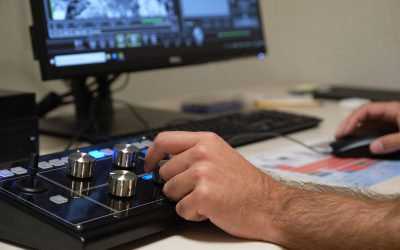Ham radio, officially known as amateur radio, is a fascinating hobby that connects enthusiasts around the globe. While traditionally popular among adults, ham radio offers unique educational and recreational opportunities for kids as well. In this blog post, we will explore the benefits of ham radio for kids, provide tips on how to get them involved, and highlight some fun activities to keep them engaged. With the right approach, ham radio can become a rewarding and educational experience for the next generation of operators.
The Benefits of Ham Radio for Kids
Engaging kids in ham radio can have numerous benefits. From enhancing their technical skills to fostering a sense of community, here are some key advantages:
Educational Growth
Ham radio provides an excellent platform for learning about science, technology, engineering, and mathematics (STEM). Kids can learn about radio waves, electronics, and communication protocols, which are integral parts of modern technology. This hands-on experience can spark an interest in STEM subjects and inspire future careers in engineering, physics, or computer science.
Development of Practical Skills
Operating a ham radio requires a variety of practical skills. Kids will learn how to use radio equipment, understand signal propagation, and even build their own antennas. These activities enhance problem-solving abilities, manual dexterity, and technical know-how.
Communication Skills
Ham radio is fundamentally about communication. By talking to other operators locally and globally, kids can improve their verbal communication skills. They will learn how to exchange information clearly and concisely, which is valuable in both personal and professional settings.
Sense of Community
Ham radio fosters a sense of community and belonging. Kids can join local amateur radio clubs, participate in events, and connect with operators worldwide. This sense of belonging can boost their confidence and provide a support network of like-minded individuals.
Getting Kids Involved in Ham Radio
Introducing kids to ham radio requires a thoughtful approach to ensure they find it enjoyable and engaging. Here are some tips to get started:
Start with the Basics
Begin by explaining what ham radio is and how it works. Use simple terms and relatable examples to make the concepts easy to understand. Show them a basic ham radio setup and let them listen in on some conversations to pique their interest.
Use Age-Appropriate Equipment
Choose age-appropriate equipment that is easy for kids to use. Handheld transceivers, also known as HTs, are a good starting point. They are portable, relatively inexpensive, and user-friendly. Brands like Baofeng and Yaesu offer models suitable for beginners.
Find a Mentor
A mentor can make a significant difference in a child’s ham radio journey. Look for experienced operators in your local amateur radio club who are willing to teach and guide young enthusiasts. Mentors can provide hands-on training, answer questions, and share their passion for the hobby.
Join a Radio Club
Joining a local amateur radio club can provide valuable support and resources. Clubs often have regular meetings, events, and workshops that can help kids learn and stay motivated. They will also have the opportunity to meet other young operators and make new friends.
Encourage Participation in Events
Participating in ham radio events, such as Field Day or Kids Day, can be a fun and educational experience. These events provide an opportunity to practice communication skills, learn from others, and see the broader ham radio community in action.
Fun Activities to Keep Kids Engaged
Keeping kids engaged in ham radio involves incorporating fun and interactive activities. Here are some ideas to make their ham radio experience enjoyable:
Fox Hunts
Fox hunts, or transmitter hunts, are a popular ham radio activity where participants use radio direction finding techniques to locate a hidden transmitter. This activity combines physical exercise with radio skills, making it an exciting challenge for kids.
Building Projects
Hands-on building projects can be very engaging for kids. Start with simple projects like building a basic antenna or a crystal radio. As they gain confidence and skills, they can move on to more complex projects like assembling a QRP (low-power) radio kit.
Contests and Awards
Ham radio contests and awards provide goals and incentives for kids to improve their skills. Contests like the ARRL Kids Day encourage young operators to make as many contacts as possible in a short period. Awards such as Worked All States (WAS) or DX Century Club (DXCC) can motivate kids to reach specific milestones.
Learning Morse Code
Learning Morse code can be a fun and rewarding challenge. Kids can start with simple letters and numbers, gradually building up to more complex messages. Morse code practice apps and online resources make learning accessible and enjoyable.
Satellite Communications
Communicating via amateur radio satellites can be an exciting aspect of ham radio. Kids can learn about satellite orbits, tracking, and making contacts through these “birds.” With the right equipment, they can even attempt to communicate with the International Space Station (ISS).
Overcoming Challenges
While introducing kids to ham radio can be rewarding, there are some challenges to be aware of:
License Requirements
In most countries, operating a ham radio requires a license. The process typically involves passing an exam that tests knowledge of radio regulations, operating practices, and basic electronics. While this may seem daunting, with proper guidance and study, many kids can successfully obtain their licenses.
Maintaining Interest
Maintaining a child’s interest in ham radio can be challenging, especially with so many other distractions. Regularly introducing new activities, projects, and goals can help keep their interest alive. Encouraging them to participate in club events and contests can also provide ongoing motivation.
Balancing Screen Time
While ham radio is a hands-on activity, some aspects, such as logging contacts or using digital modes, involve screen time. It’s important to balance this with outdoor activities like fox hunts and field days to ensure a well-rounded experience.
Ham radio offers a unique blend of education, skill development, and community engagement, making it an ideal hobby for kids. By understanding the benefits, getting kids involved, and keeping them engaged with fun activities, we can inspire the next generation of ham radio operators.




